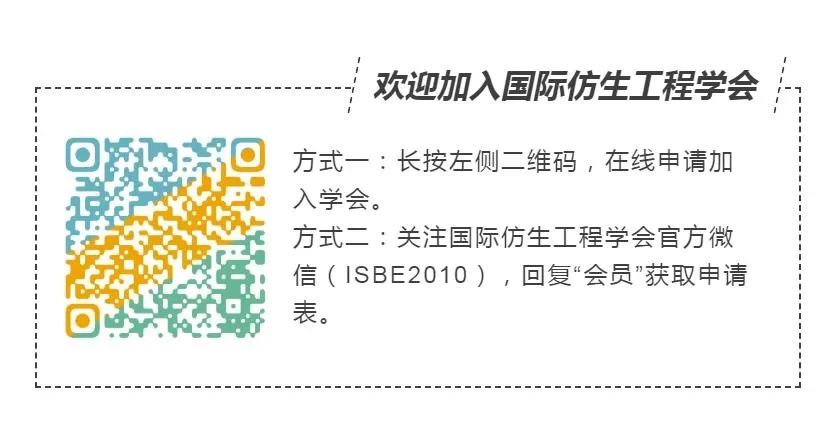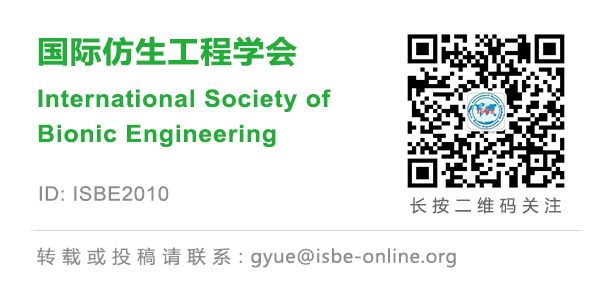
The miniature underwater robot (characteristic size less than 10 cm) has broad application prospects in fields such as archaeology, environmental monitoring, and pipeline inspection. Compared to traditional-sized underwater robots, miniature robots have a natural advantage in narrow and complex environments. Existing bionic propulsion methods (such as fish-like, snake-like, and jellyfish-like movements) typically can only move along one or two degrees of freedom, making it difficult to meet the high maneuverability requirements in confined spaces.
The sea butterfly, a small marine organism that propels itself by flapping its wing surfaces on both sides of its body, achieves multidirectional force through flexible flapping wings, allowing it to adjust the angle of attack and freely perform movements such as hovering, straight-line travel, pitching, and yawing. This provides a new idea for bionic design and offers new biological inspiration for the design of miniature bionic robots.

This study developed a multi-degree-of-freedom miniature robot RoboPteropod, which achieves real-time changes in propulsion direction by actively adjusting the angle of attack of the bionic flapping modules on both sides of the body, thus obtaining agile modal switching capabilities.
Based on piezoelectric actuators, a four-bar mechanism, and a flapping wing composite system, the research team first established a dynamic model that includes the effect of fluid dynamic pressure attenuation. Both simulations and experiments indicate that an increase in flapping frequency leads to a decay in flapping angle, and the model predictions align well with actual test results. The Reynolds number of the flapping system ranges from 193 to 617, which is highly close to that of real sea butterflies (35–380), demonstrating good bionic characteristics. By adjusting the phase difference of the bionic driving modules’ flapping, the issue of low-frequency stability caused by asymmetric vortex shedding during in-phase flapping at low frequencies was resolved.
By adjusting the flapping frequency and voltage, RoboPteropod can achieve hovering control within a depth range of 5–35 cm, with a maximum ascent speed of 8.5 cm/s (1.88 BH/s). Additionally, by adjusting the robot’s control signals, it can perform multiple cyclic movements within a certain depth range.
When actively adjusting the angle of attack of the dual wings to 90°, the robot can move straight on the horizontal plane at a speed of 4.8 cm/s (1.2 BL/s). By synchronously adjusting the angle of attack of the dual wings (25°–55°), it can control the pitch angle to achieve diagonal climbing and obstacle crossing (pitch mode); setting the left and right wing angles to be opposite (±15°) allows the robot to rotate while ascending, achieving underwater 360° environmental scanning (spiral mode); using differential frequency control of the left and right wings enables a minimum turning radius of 25 cm, while reverse angle adjustments allow for zero-radius turning in place, with a turning speed of up to 135°/s, significantly outperforming existing miniature underwater robots.
In a simulated narrow cave environment (10 cm × 14 cm), RoboPteropod can continuously perform vertical ascents, horizontal traverses, turns, and diagonal climbs, taking a total of 28 seconds. Multiple experiments have shown that the average 3D trajectory error under open-loop control is only 46.18 mm, verifying good repeatability and control accuracy.
The piezoelectric-driven flexible flapping wing system proposed in this study enables underwater multimodal motion in a compact size, allowing for flexible switching of motion modes without complex mechanical structures. Compared to existing miniature underwater robots, RoboPteropod excels in ascent speed, forward speed, and turning capabilities, while also exhibiting high stability and low energy consumption (COT = 23.25 J/kg·m).
Furthermore, the piezoelectric driving module has undergone high-pressure testing (30-100 MPa), providing possibilities for future exploration in deep-sea and high-pressure environments. Future efforts will focus on integrating miniature sensors to achieve closed-loop control and autonomous navigation, further expanding the application potential of RoboPteropod in complex underwater environments.
Author Biography
Li Taishan, PhD in Solid Mechanics from the School of Aeronautics and Astronautics, Zhejiang University. In 2020, he graduated from Harbin Engineering University with a bachelor’s degree in Engineering Mechanics. His research interests include underwater bionic robots, bionic flapping robots, and structural optimization design.

Dr. Liu Yide is currently a postdoctoral researcher in the Department of Mechanical Engineering at Tsinghua University. In 2018, he graduated from Harbin Institute of Technology with a bachelor’s degree in Mechatronics Engineering, and in 2023, he obtained his PhD in Mechanics from Zhejiang University. His research interests include mechanical insects, miniature origami robots, and bionic motion control. He has published papers as the first author or corresponding author in journals such as Nature Communications, T-RO, RA-L. In 2023, he was nominated as an RSS Pioneer for his research on mechanical insects and assembly systems, being the first researcher from a Chinese university to receive this nomination.

Qu Shaoxing, a distinguished professor at Zhejiang University, is a “Changjiang Scholar” appointed by the Ministry of Education, a recipient of the National Outstanding Youth Science Fund, and the principal investigator of the National Natural Science Foundation Innovation Group Project. He currently serves as the vice chairman of the Chinese Society of Mechanics, a member of the Teaching Guidance Committee for Mechanics of Higher Education Institutions, a board member of the Society of Engineering Sciences, the director of the “Soft Matter Mechanics” Innovation Intelligence Base for Higher Education Institutions, the director of the International Science and Technology Cooperation Base for Soft Robotics and Flexible Electronics in Zhejiang Province, and the director of the Joint Laboratory of Intelligent Materials and Flexible Electronics Technology between Zhejiang University and the China Academy of Space Technology. He has previously served as the vice dean of the School of Aeronautics and Astronautics at Zhejiang University and the director of the Key Laboratory of Soft Robotics and Intelligent Devices in Zhejiang Province. His main research interests include intelligent soft materials and soft machines, intelligent miniature robots, multiscale and micro-nano mechanics, and mechanics of composite materials. He has published over 200 SCI academic papers and serves on the editorial boards of journals such as International Journal of Solids and Structures, International Journal of Fracture, Proceedings of the Royal Society A, Research, ASME Open Journal of Engineering, Journal of Zhejiang University-SCIENCE A (Applied Physics & Engineering), Mechanics of Soft Materials, Journal of Solid Mechanics, Advances in Mechanics, Robotics, etc., and has served as the associate editor of the ASME Journal of Applied Mechanics.

Zhou Haofei, a researcher under the Hundred Talents Program at Zhejiang University, is a tenured associate professor and doctoral supervisor. He serves as a member of the Data-Driven Computational Mechanics Methods Professional Group of the Chinese Society of Mechanics, a member of the Solid Mechanics Professional Committee of the Zhejiang Provincial Mechanics Society, and a young editorial board member of the Journal of Computational Mechanics. His research focuses on micro-nano mechanics, advanced materials, and structural mechanics, with results published in journals such as Science, Nature, Journal of the Mechanics and Physics of Solids, Proceedings of the National Academy of Sciences. He has led five national-level projects, including the Excellent Young Scientists Fund of the National Natural Science Foundation.

